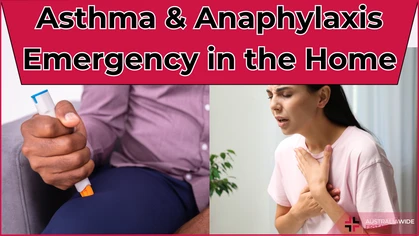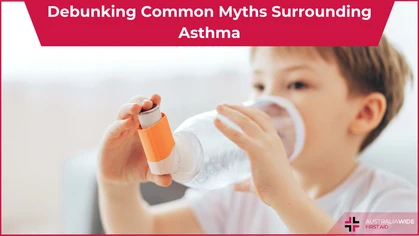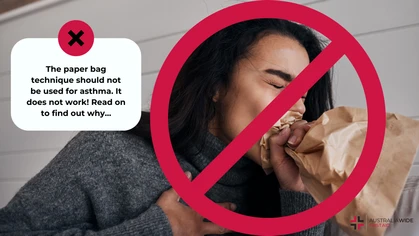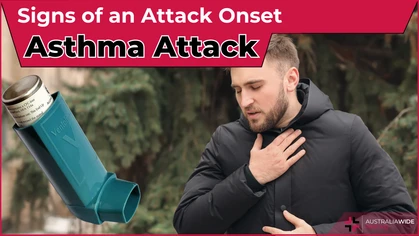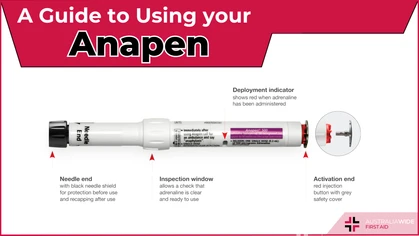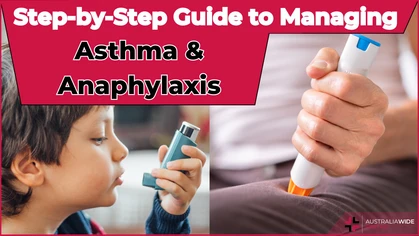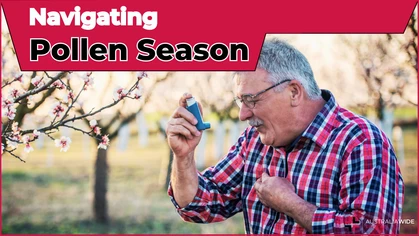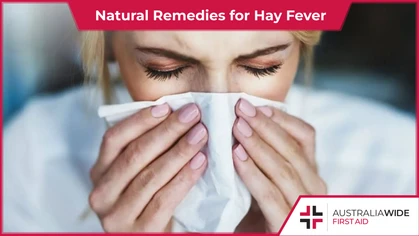The Comprehensive Guide for EpiPens

Allergy and Asthma
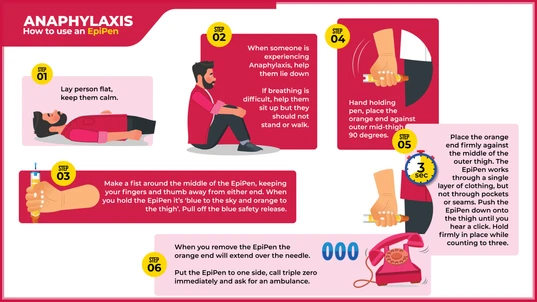 The EpiPen is an epinephrine auto-injector that delivers a single, fixed dose of adrenaline in the event of a severe allergic reaction or anaphylaxis. These life-saving devices are essential for individuals who are at risk of these serious allergic reactions, and it is crucial to know how to administer them correctly in case of emergency.
Continue reading to discover more about anaphylaxis, an overview of EpiPens, and a guide to administering the adrenaline auto-injector alongside anaphylaxis first aid.
The EpiPen is an epinephrine auto-injector that delivers a single, fixed dose of adrenaline in the event of a severe allergic reaction or anaphylaxis. These life-saving devices are essential for individuals who are at risk of these serious allergic reactions, and it is crucial to know how to administer them correctly in case of emergency.
Continue reading to discover more about anaphylaxis, an overview of EpiPens, and a guide to administering the adrenaline auto-injector alongside anaphylaxis first aid.
What is an EpiPen?
The EpiPen is one of two types of adrenaline auto-injectors available in Australia to treat severe allergic reactions and anaphylaxis. It provides a single, fixed dose of adrenaline via intramuscular injection into the muscle of the leg. EpiPens can be administered by anyone, including those without medical training or even self-administered, and reduces the risk of hospitalization and even death if administered early enough. Adrenaline is a natural hormone produced by the body and is released in response to an anaphylactic event. An injection of adrenaline assists this response and combats the anaphylactic symptoms by inducing vasoconstriction, which is the narrowing of the blood vessels, to combat low blood pressure and bronchodilation, the relaxation of the airways to improve breathing. There are three types of EpiPen available:- EpiPen Junior (150 micrograms) - for children 7.5kg - 20kg
- EpiPen (300 micrograms) - for adults and children over 20kg
What is Anaphylaxis?
When the immune system perceives a substance as harmful, it can trigger an allergic reaction that can range from mild to life-threatening. Anaphylaxis is an extreme form of allergic reaction that can occur when the body identifies an allergen as a danger and triggers the release of a chemical called Histamine. This chemical can cause severe responses, including the widening of blood vessels (vasodilation) that can lead to a sudden drop in blood pressure and an irregular heartbeat. It can also cause narrowing of the airways (bronchoconstriction) which can make it difficult to breathe and lead to pulmonary edema, where fluid accumulates in the lungs and causes further swelling. While the substance may be harmless to most people, those who are susceptible to severe allergic reactions need to be aware of the potential dangers and take appropriate precautions. Exposure to allergens can lead to a range of symptoms, from mild to severe, including anaphylaxis. Mild symptoms of an allergic reaction may include:- hives or welts on the skin
- swelling of the face, lips, and/or eyes
- tingling and itchiness in the mouth
- stomach pain and vomiting (common in those with insect allergies)
- difficult or noisy breathing
- throat swelling or tightness
- persistent cough or wheezing
- swollen tongue
- difficulty speaking, or a hoarse voice
- Young children may appear pale and floppy during anaphylaxis
What causes anaphylaxis?
Anaphylaxis can be triggered by a variety of allergens, some of which are more common than others. This can include:- Food allergies are a common cause of anaphylaxis, with peanuts, shellfish, eggs, milk, tree nuts, sesame, and soy being some of the most frequent culprits
- Insect bites and stings from bees, wasps, and certain species of ticks
- Medications, including antibiotics, prescription drugs, and non-steroidal anti-inflammatory drugs like aspirin
- General anaesthetics
- Latex found in common household items like gloves and condoms
- Contrast agents used in medical imaging
How to Use an EpiPen
Individuals diagnosed with a severe allergy and at risk of anaphylaxis should carry an auto-injector at all times. In the event of an anaphylactic reaction, immediate administration of an adrenaline auto-injector, such as an EpiPen, is necessary. There are three simple steps to administering an EpiPen:- Step 1: Hold the EpiPen tightly and remove the blue safety cap
- Step 2: Keep the leg still and place the orange end against the outer mid-thigh. This can be done through clothing or straight onto the skin
- Step 3: Push down firmly until a click is heard or felt and hold in place for 3 seconds. After this, remove the EpiPen
- Laying the person flat or if they have difficulty breathing, keep in a sitting position. Do not keep them standing or walking.
- Prevent further exposure to the allergen or trigger substance
- Administer adrenaline via an auto-injector
- Call an ambulance or seek immediate medical attention
- Administer asthma medication and/or oxygen for breathing difficulty and symptoms
- If the person stops breathing, follow resuscitation and life support procedures.
Conclusion
The EpiPen is an essential device that can save lives in cases of anaphylaxis. It is essential not only to recognise the signs and symptoms of anaphylaxis but also to have a clear understanding of how to properly use an EpiPen for effective administration. By being adequately informed and prepared, you can have the confidence to handle a severe allergic reaction or anaphylaxis, avoiding, any potential errors that may result in serious consequences. To learn more about treating anaphylaxis as well as first aid for other emergency medical situation, enrol in one of our first aid courses near you:
Originally published at
https://www.australiawidefirstaid.com.au/resources/comprehensive-guide-for-epipens
as part of the Australia Wide First Aid Articles Library
